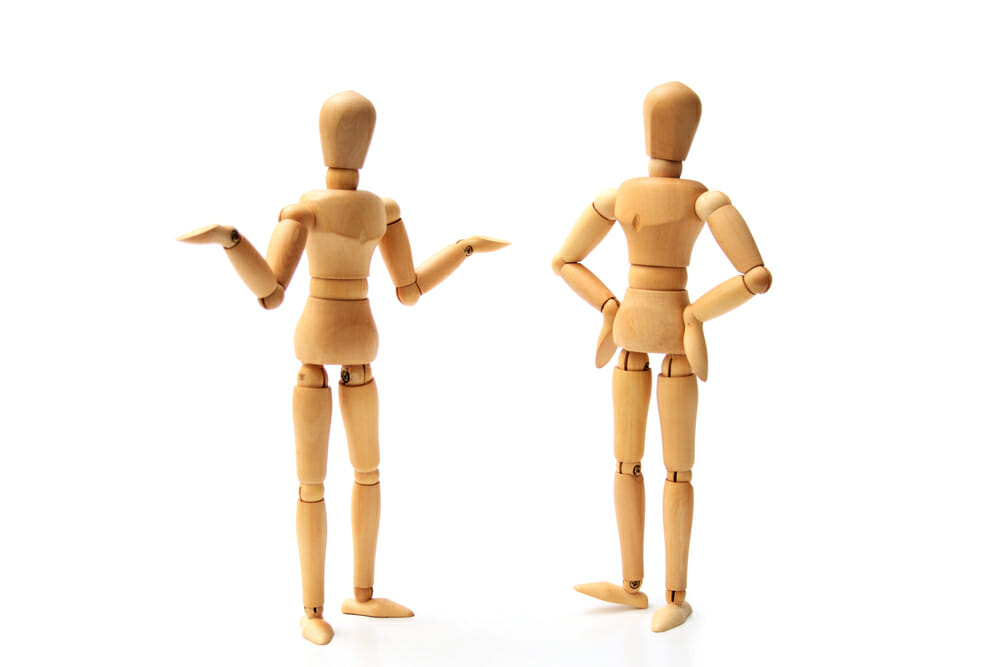Written in collaboration with Janine Driver, author of You Can’t Lie to Me
Now that we’ve peeked behind the curtain of speech and facial expressions, it’s time to move on to body language. But before we focus on our subject’s nonverbal cues, let’s shine the light on our own body language.
Remember: when detecting deception, we aren’t looking for the lie – we are looking for the truth. One of your best chances to get to the truth is through trust. Open and honest body language is one tool to help you achieve trust.
As the interviewer, when you use open, honest, natural body language, your subject is likely to follow suit. When using open and honest body language, the honest person will tend to:
- Turn their body and point their feet toward you
- Lean forward with casual interest
- Shift posture fluently without nervous tics
Continuing the analogy of the tightrope walker – when your questions probe into unwanted territory, your subject’s nonverbal cues will likely stray far from open and honest:
THE EQUIVOCATOR
Discrepancies indicating deception leak from the equivocator as obvious physical discomfort or gestures that are incongruous with what they are saying:
- Ill-timed shoulder shrugs: Shoulder shrugs indicate uncertainty, so when a shrug shows up with a definitive statement it could indicate deception. For example, when a question like, “Have you stolen from your employer?” is answered with a resounding “No!” and partnered with a shoulder shrug, you may have landed on a hotspot. Beware – these shrugs are usually quite subtle, and one shrug does not a fraudster make!
- Involuntary bodily functions: The fight or flight response to stress can cause unintended physiological changes that can leak with the heightened stress the equivocator is experiencing. Watch for clues like jittery hands, a growling stomach or a sweaty brow.
THE MAXIMIZER
Forever fighting to convince you of the truth, the maximizer’s body language is often anxious and laced with arrogance:
- Timing of gestures: For the honest person, a hand gesture comes a beat before the words. An anxious liar’s gestures will follow the words.
- Palm-down gestures: Palm-down gestures during an interview are often an attempt to control and keep a tight rein on the conversation. Used in a standing position, these gestures are often an attempt to get you to back off.
- Steepling: For a liar, steepling is the non-verbal equivalent of “don’t even try me.”
- The crotch display: Watch out for this one – it’s the ultimate attempt to communicate dominance, arrogance and defiance.
THE MINIMIZER
This behavior is among the easiest to spot. While the maximizer is busy puffing up, the minimizer is desperate to disappear.
Think about a time when you’ve embarrassed yourself in front of a group – didn’t you shrink just a little?
Watch for similar behaviors during an interview. If your subject’s open stance suddenly changes and they shrink, cross their ankles, or cover their face, they are minimizing – a perfect time to dig a bit deeper.
Minimizers will opt to have a table, a book, a purse – anything – in front of them. Keep this in mind and set your interview room so that nothing blocks your subject.
When the minimizer lacks physical blockers, they will likely resort to body-blocking behaviors, e.g., hands in front of the mouth, neck, throat or any other vulnerable area. Eye-blocking is another favorite – often accomplished by covering the eyes or squinting.
THE PACIFIER
Self-touch is often an unconscious way to relieve tension. Nail biting and hair twirling are examples of pacifiers in action.
Again, as with any nonverbal cues, be cautious – one cue or gesture does not necessarily mean you have found a fraudster.
SHARPEN YOUR SKILLS
Refining deception-detecting skills takes practice. People watching can be a great way to hone your skills. Deliberate observance of human interaction can provide invaluable instruction – watch for ill-timed gestures, changes in posture or other nonverbal cues.
Learn how we have used fraud examination techniques to catch fraudsters in the act.

